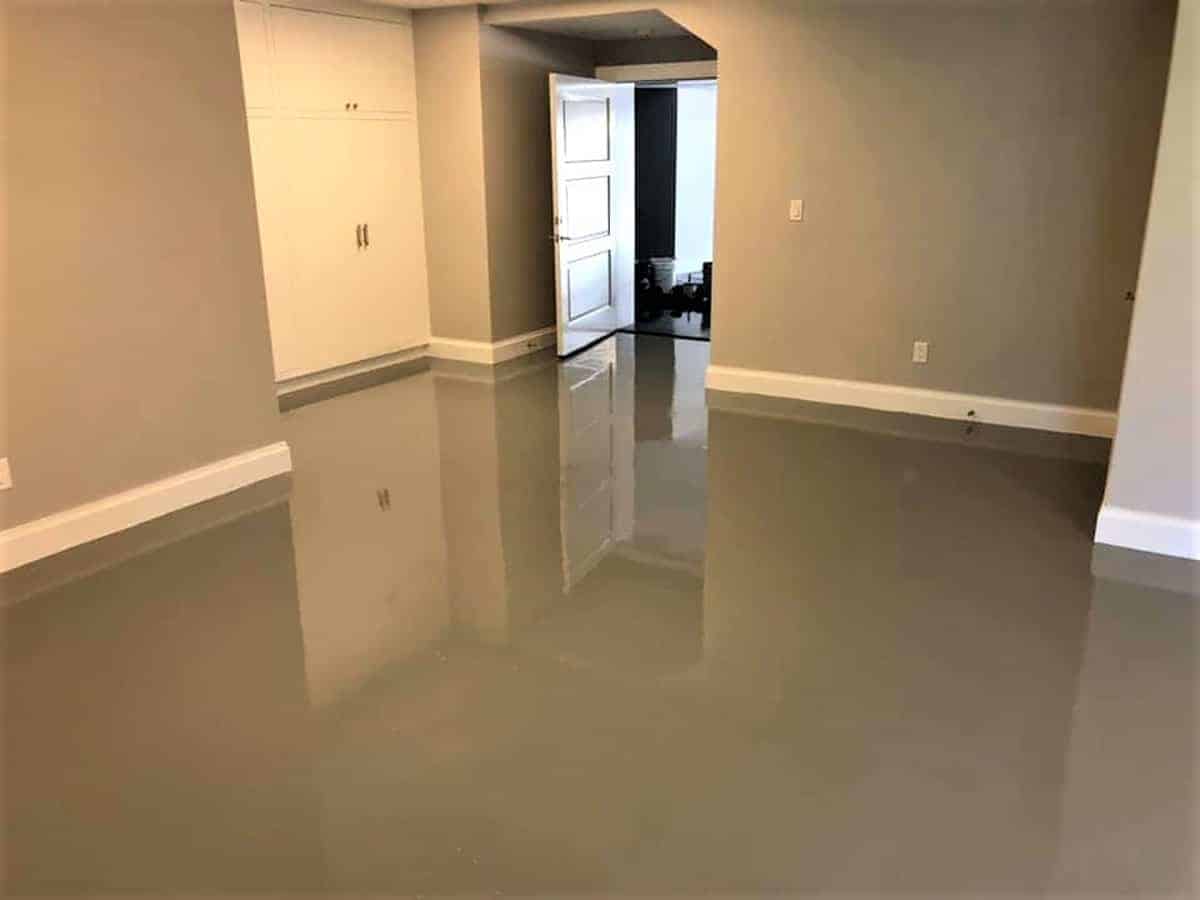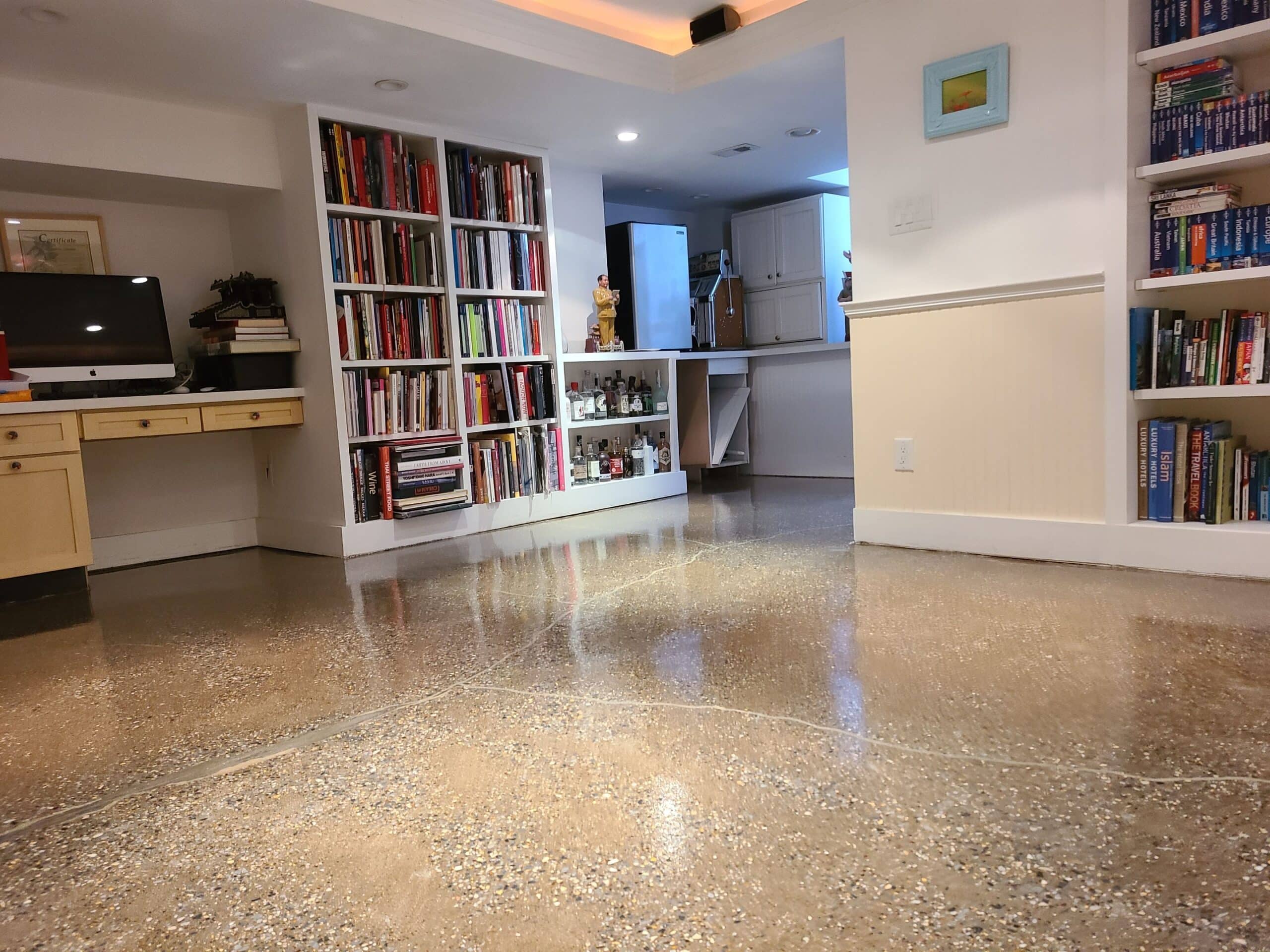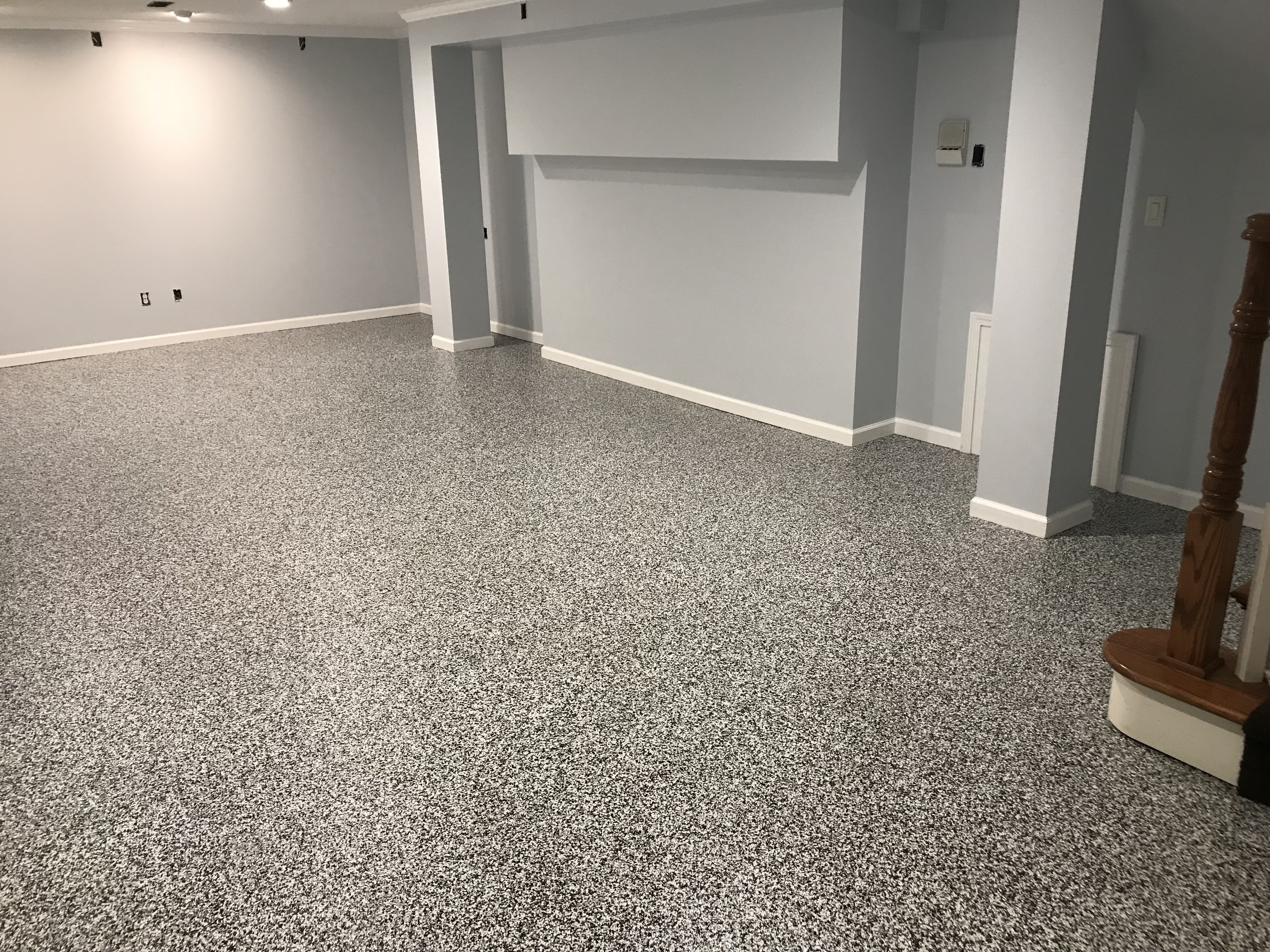Benefits of Epoxy Flooring in Basements
Epoxy flooring provides numerous advantages that make it an excellent choice for basements. From its durability to its aesthetic appeal, it’s a versatile flooring option that meets the needs of various basement uses.
- Moisture Resistance: Basements are prone to moisture and humidity, which can damage many types of flooring. Epoxy flooring is highly resistant to water, making it an ideal choice for basements. It creates a seamless, impermeable barrier that prevents moisture from seeping through.
- Durability: Epoxy flooring is incredibly durable and can withstand heavy foot traffic, impacts, and abrasions. This makes it suitable for basements used as workshops, gyms, or storage areas. It’s also resistant to chemicals, making it easy to clean and maintain.
- Aesthetic Appeal: Epoxy flooring offers a sleek, polished look that can enhance the appearance of your basement. It’s available in a variety of colors, patterns, and finishes, allowing you to customize the look to match your style. You can even add decorative flakes or metallic effects for a unique design.
- Easy to Clean: The smooth, non-porous surface of epoxy flooring makes it easy to clean and maintain. Spills can be wiped up quickly, and dirt and debris can be swept or mopped away without leaving stains. This is especially beneficial in basements, which can be prone to dust and moisture.
- Cost-Effective: Compared to other flooring options, epoxy is a cost-effective solution for basements. It provides long-lasting durability and requires minimal maintenance, reducing the need for frequent repairs or replacements. Its ability to transform a plain concrete floor into a polished surface adds value to your home.

Types of Epoxy Flooring for Basements
There are several types of epoxy flooring to choose from, each with its unique features and benefits. Understanding the differences can help you select the best option for your basement.
Solid Epoxy: Solid epoxy is a traditional option that provides a thick, durable coating. It’s ideal for basements that require a high level of protection, such as workshops or storage areas. Solid epoxy is available in a range of colors and finishes.
Water-Based Epoxy: Water-based epoxy is a more environmentally friendly option that emits fewer fumes during application. It’s easier to apply and clean up, making it a good choice for DIY projects. While it’s not as durable as solid epoxy, it still provides a strong, moisture-resistant finish.
100% Solids Epoxy: 100% solids epoxy is the most durable and chemical-resistant option. It contains no solvents, making it a great choice for basements exposed to harsh conditions. This type of epoxy is often used in industrial settings but can also be used in residential basements for added durability.
Epoxy Flake Flooring: Epoxy flake flooring involves adding decorative flakes to the epoxy coating. This creates a textured, non-slip surface that’s both functional and attractive. The flakes come in various colors and sizes, allowing for a customized look.
Metallic Epoxy: Metallic epoxy creates a unique, high-gloss finish with a marbled or swirled effect. It’s a popular choice for basements used as living spaces or entertainment areas, as it adds a touch of elegance and sophistication.

Design Considerations for Epoxy Basement Flooring
When selecting epoxy flooring for your basement, it’s important to consider various design elements to ensure it complements your space and meets your functional needs.
Color and Finish: The color and finish of your epoxy flooring can significantly impact the overall look of your basement. Lighter colors can make a small basement feel more spacious, while darker colors can add warmth and coziness. Consider the existing color scheme of your basement when choosing the flooring.
Texture and Slip Resistance: If your basement will be used as a gym, workshop, or play area, consider adding a textured or non-slip finish to the epoxy. This can help prevent slips and falls, especially in areas prone to moisture. Decorative flakes or anti-slip additives can enhance safety without compromising aesthetics.
Patterns and Effects: Epoxy flooring offers a variety of patterns and effects, from solid colors to metallic swirls. You can also create custom designs, such as borders or logos, to personalize your basement. Think about how the flooring will complement the overall design and function of the space.
Compatibility with Underfloor Heating: If your basement has underfloor heating, ensure that the epoxy flooring is compatible with this system. Not all epoxy products are suitable for use with underfloor heating, so check the manufacturer’s specifications before making a purchase.
Edge Treatments: Consider how the edges of the epoxy flooring will be finished. You can use baseboards or transition strips to create a clean, polished look. Proper edge treatments also help protect the flooring from chipping or peeling.

Installation Tips for Epoxy Basement Flooring
Proper installation is crucial for the performance and longevity of your epoxy flooring. Here are some tips to ensure a successful installation.
Prepare the Subfloor: The concrete subfloor must be clean, dry, and free of cracks or imperfections before applying epoxy. Use a concrete grinder or etcher to open the pores of the concrete and ensure proper adhesion. Repair any cracks or holes with a concrete patching compound.
Test for Moisture: Before applying epoxy, test the basement floor for moisture. Place a plastic sheet on the floor and tape down the edges. After 24 hours, check for condensation under the sheet. If moisture is present, you may need to address drainage or humidity issues before proceeding.
Apply a Primer: A primer helps the epoxy adhere to the concrete and provides a more even finish. Apply the primer according to the manufacturer’s instructions and allow it to dry completely before applying the epoxy.
Mix and Apply the Epoxy: Mix the epoxy resin and hardener thoroughly, following the manufacturer’s instructions. Apply the epoxy in thin, even coats using a roller or squeegee. Work in small sections to avoid streaks or bubbles. Allow each coat to dry before applying the next.
Add Decorative Elements: If you’re using decorative flakes or metallic effects, add them while the epoxy is still wet. Spread the flakes evenly or use a trowel to create swirls and patterns. Allow the epoxy to cure completely before applying a topcoat for added protection.

Maintenance and Care for Epoxy Basement Flooring
Regular maintenance is essential to keep your epoxy flooring looking its best and functioning properly. Here are some tips for maintaining and caring for your flooring.
Regular Cleaning: Sweep or vacuum the floor regularly to remove dirt and debris that can scratch the surface. Use a damp mop with a mild detergent for routine cleaning, avoiding harsh chemicals that can damage the epoxy.
Prompt Spill Cleanup: Clean up spills immediately to prevent staining and water damage. Use a soft, damp cloth to blot the spill rather than wiping, which can spread the liquid. Avoid using abrasive cleaners or scrubbers.
Protect from Heavy Objects: Place protective pads or mats under heavy furniture or equipment to prevent scratches and dents. For heavy items, consider using furniture sliders to move them without damaging the floor.
Avoid High Heels and Sharp Objects: Avoid wearing high heels or shoes with sharp edges on epoxy flooring, as they can cause dents and scratches. Similarly, be cautious when moving heavy or sharp objects across the floor.
Reapply Topcoat as Needed: Over time, the topcoat on epoxy flooring may wear off, especially in high-traffic areas. Reapply a protective topcoat every few years to maintain the floor’s resistance to wear and tear. Follow the manufacturer’s recommendations for the best results.

Basement Flooring Solutions

rustoleum metallic epoxy floor images Epoxy

Strong Concrete Foundations with Epoxy Floors

Smooth Epoxy Floor in Basement – Mile High Coatings

Related articles: